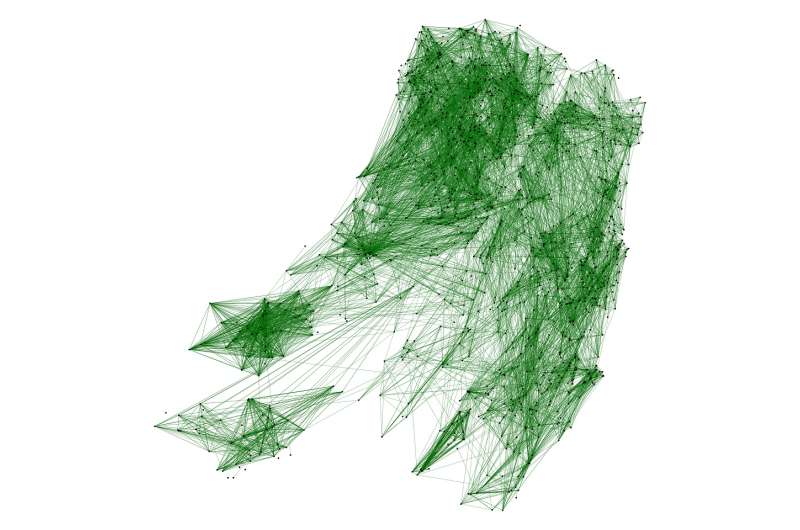Spread of diseases in farmed animals shown using social network analysis

Researchers have shown that looking at movements of operators and vehicles between farms in the same way we look at contacts in social networks can help explain the spread of dangerous infectious diseases of livestock, such as foot-and-mouth disease and avian influenza. This research, published in PLOS Computational Biology, can contribute to the development of more accurate tools for predicting the spread of livestock diseases and may help implement more effective biosecurity measures in farms.
The study, produced by Dr Gianluigi Rossi from the Istituto Zooprofilattico Sperimentale della Lombardia e dell'Emilia Romagna and colleagues, have shown that the network of contacts originated from on-farm visits by veterinarians in dairy farms of Northern Italy displays hidden features that cannot be detected by simply looking at the frequency of visits and unveils patterns of infection otherwise unexplained. The authors discovered that veterinarians' movements produce an unexpectedly large number of potentially infectious contacts between farms that can quickly spread dangerous livestock diseases.
The research, made possible by the availability of high-resolution data in space and time on veterinarian movements in the study area, shed light on the actual significance of operator movements in disease spread, a still poorly understood topic due to the highly diverse and complex nature of such movements and to privacy issues in data collection.
The researchers compared the role of veterinarian movements on diseases spread with those of animal exchange between farms, which is recognized as the most effective transmission route for livestock infectious diseases. They found that co-occurrence of operator movements and animal exchanges is synergistic, largely amplifying the potential for disease propagation. The study shows how multilayer network analysis substantially improves the way diseases spread can be described, thus contributing to their control.
More information: Rossi G, De Leo GA, Pongolini S, Natalini S, Zarenghi L, Ricchi M, et al. (2017) The Potential Role of Direct and Indirect Contacts on Infection Spread in Dairy Farm Networks. PLoS Comput Biol 13(1): e1005301. DOI: 10.1371/journal.pcbi.1005301
Journal information: PLoS Computational Biology
Provided by Public Library of Science


















